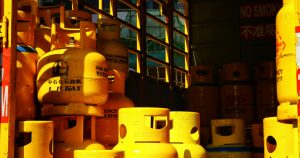Every day, workers across manufacturing, chemical processing, pharmaceutical, and industrial facilities face a silent risk that many organisations underestimate: the transfer of hazardous liquids. While the immediate dangers of skin contact, spills, and exposure to hazardous liquids are both well-known and well-documented, the true cost of inadequate liquid handling systems extends far beyond what appears on a company’s incident report.
The Real Price of Traditional Handling Methods
When handling hazardous liquids using conventional methods, companies often focus solely on the upfront equipment costs. However, the hidden expenses accumulate quickly. The expenses can include, but aren’t limited to, lost productivity due to contamination events, regulatory fines for non-compliance, increased insurance premiums following incidents, and, arguably, the most important one, the immeasurable cost of employee well. Allg.
Understanding the Hazard Spectrum
The handling of any hazardous liquids involves more than one potential issue. Unfortunately, due to the risks associated with working with these types of liquids, comprehensive solutions are necessary across the board. This is because any skin contact with corrosive or toxic substances can cause immediate burns, and inhalation of chemical fumes during transfer processes exposes workers to respiratory hazards that may not even manifest until years later. Spills create environmental contamination risks and potential slip hazards, whilst cross-contamination between different chemicals can trigger dangerous reactions or compromise product quality.
There’s also background chemical exposure—the gradual accumulation of low-level contact over time—that represents perhaps the most insidious risk. With background exposure, workers may not experience immediate symptoms, yet repeated exposure can lead to chronic health conditions that, unfortunately, can devastate lives, which can in turn create significant liability for employers.
The Evolution of Safe Transfer Technology
Modern industrial safety demands have driven innovation in liquid handling systems. Here at Liquisafe, we’ve realised that the most effective solutions address hazards at their source rather than relying solely on personal protective equipment. This is why we’ve created Liquisafe, a closed-loop transfer system that eliminates direct human contact with hazardous substances.
Our advanced liquid transfer system utilises suspended units positioned directly above drums, featuring retractable dip pipes that enable extraction or injection without manual handling. Critically, these systems incorporate sealed extraction pipes connected to local exhaust ventilation (LEV) systems, ensuring that harmful fumes are immediately captured and safely removed from the work environment.
This approach delivers multiple advantages simultaneously. Workers remain at a safe distance from hazardous materials throughout the transfer process. The sealed system prevents spills and splashes, eliminating one of the most common causes of workplace chemical incidents. Fume extraction protects respiratory health, whilst the controlled environment prevents cross-contamination between different substances.
Measuring Return on Safety Investment
Progressive organisations recognise that safety equipment represents an investment, not an expense. The return manifests in numerous ways, including reduced incident rates, lower insurance costs, and minimised compensation claims. Perhaps most importantly, a robust safety culture strengthens employer reputation, making it easier to attract and retain skilled workers in competitive labour markets.
Building a Culture of Proactive Safety
Effective hazard management requires more than purchasing equipment; it demands a fundamental shift in organisational culture. Leadership must champion safety as a core value rather than a compliance checkbox. This means evaluating every process through a risk-reduction lens and asking difficult questions: Can this hazard be eliminated entirely? If not, how can we minimise exposure?
For hazardous liquid handling, the answer increasingly lies in Liquisafe: an automated, sealed transfer system that eliminates direct contact between human operators and hazardous substances.
Making the Right Choice
When evaluating liquid handling solutions, organisations should consider several critical factors such as compatibility with existing LEV systems, versatility across different liquid types and viscosities, ease of use to ensure consistent application, and durability for long-term reliability in demanding industrial environments.
The question facing many companies isn’t whether they can afford to implement advanced liquid handling systems—it’s whether they can afford not to. Every transfer of hazardous liquid without proper protection represents a roll of the dice with worker health, environmental safety, and organisational liability, and that’s a gamble you won’t want to take.
In an era of heightened safety consciousness and regulatory scrutiny, the companies that thrive will be those that place worker protection at the core of both their operational philosophy and values. Liquisafe represents a proven pathway to achieving this goal, transforming high-risk processes into controlled and predictable operations that protect both people and the business’s profitability.


